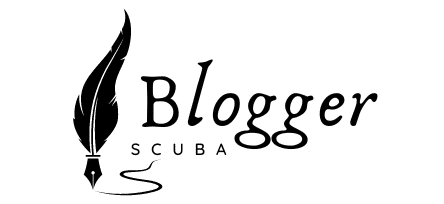How to Choose the Best Type of Automatic Feeder for Your Pet’s Needs?

Choosing the best automatic pet feeder for your furry friend is more than just a convenience feature. This device plays a pivotal role in managing your pet’s diet and contributes significantly to their overall health. However, the sheer variety of automatic pet feeders available in the market can make the selection process quite daunting. So, how can you select the best one for your pet’s needs?
From considering the size and dietary needs of your pet to the feeder’s features, capacity, and reliability—there are several factors to consider. This article is here to guide you through each one of them in detail.
Sujet a lire : What’s the Best Way to Train a Dog to Interact Safely with Children?
Understanding Your Pet’s Feeding Needs
The first step in choosing the perfect automatic pet feeder is understanding your pet’s feeding needs.
Different pets have different dietary needs. A cat, for instance, requires smaller but more frequent meals compared to a dog. So, you need to know your pet’s eating habits and dietary requirements before making a choice.
Dans le meme genre : How to Effectively Use Positive Reinforcement for Training Exotic Pets?
If your pet is on a special diet or needs to eat specific amounts at certain times, a feeder with advanced programming capabilities would be ideal. On the other hand, if your pet has a healthy appetite and eats regular meals, an automatic feeder with a timer would suffice.
Size and Capacity of the Feeder
Next, consider the size of your pet and the feeder’s capacity.
The size of the feeder should be proportional to the size of your pet. For instance, a large dog would need a feeder with a higher capacity than a small cat. Ensure the feeder can hold enough food to last your pet for at least a day.
Capacity refers to the amount of food the feeder can hold. For multi-pet homes, a feeder with a large capacity would be more suitable. However, if you have a single small pet, a feeder with a smaller capacity would be enough.
Evaluating Feeder’s Features and Reliability
Automatic pet feeders come with a range of features. Some have advanced programming capabilities allowing you to set specific feeding times and portions. Others have voice recording features for pet owners who want to call their pets to eat.
When evaluating the features, consider what would best suit your lifestyle and your pet’s feeding needs. If you’re often away from home or have erratic work schedules, a feeder with advanced scheduling would be ideal. On the other hand, if you’re mostly at home and want to ensure your pet eats at regular intervals, a feeder with a timer would be enough.
Reliability is crucial when choosing an automatic pet feeder. The last thing you want is a feeder that malfunctions when you’re away, leaving your pet hungry. Look for feeders with good reviews and from reputable brands to ensure reliability.
Considering the Material and Cleanliness
The material of the automatic pet feeder is a crucial factor to consider.
Choose a feeder made from non-toxic and pet-safe materials. Stainless steel and BPA-free plastic are excellent choices as they are safe and durable.
Cleanliness is also important. Pets can be quite messy eaters, and a dirty feeder can breed bacteria. Choose a feeder that’s easy to clean. Some feeders even have removable parts that are dishwasher-safe.
Budget and Additional Considerations
Lastly, consider your budget.
Automatic pet feeders range in price from budget-friendly to premium. While expensive feeders usually come with more features, it doesn’t necessarily mean they’re the best. Choose a feeder that meets your pet’s feeding needs and fits within your budget.
Additional considerations might include the type of food the feeder can dispense (wet or dry food), the power source (batteries or electric), and whether it has a backup power system.
Choosing the best type of automatic feeder for your pet’s needs doesn’t have to be a daunting task. By considering your pet’s feeding needs, the size and capacity of the feeder, its features and reliability, the material, cleanliness, your budget, and other considerations, you can make an informed decision that promotes your pet’s health and fits your lifestyle.
Evaluating Feeder’s Ease of Use and Programming
The ease of use and programming abilities of your pet feeder are critical factors that should be on your checklist.
A user-friendly automatic pet feeder often proves to be a game-changer, especially for those who aren’t tech-savvy. The feeder should have a simple interface, clear instructions, and straightforward controls. This ensures that you can easily program the feeding schedule, portion size, and other specifics without any hassle.
In terms of programming, some feeders allow customizable portion sizes and feeding times, which can be particularly helpful for pets with specific dietary needs. For example, if your pet is on a weight management program, you can precisely control the amount of food dispensed at each feeding time. Also, if your pet needs to be fed at particular times due to medication, a feeder with detailed programming capabilities would be an excellent choice.
Moreover, some feeders offer smart features like WiFi connectivity and smartphone apps. These allow you to control and monitor the feeding schedule remotely, a bonus if you travel frequently or have unpredictable schedules. However, ensure that these features don’t compromise the feeder’s reliability or make it overly complicated to use.
Assessing the Feeder’s Noise Level and Stability
The noise level and stability of the feeder are other important aspects to consider.
Pets, especially cats, can be extremely sensitive to noise. If the pet feeder is too noisy, it may scare your pet away, defeating its purpose. Therefore, it’s advisable to opt for a quiet, low-noise automatic pet feeder. Some feeders even come with silent mode features, ensuring their operation doesn’t disrupt your pet’s peace.
As for stability, the feeder should have a sturdy design to prevent your pet from knocking it over. If your pet is large or particularly playful, consider a feeder with a heavy base or non-slip feet. Some feeders also come with mounting options so they can be securely attached to a wall or floor. The goal is to ensure the feeder stays in place, even in the face of eager or aggressive eaters.
Conclusion
Choosing an automatic pet feeder is a decision that requires careful consideration of several factors. Understanding your pet’s feeding needs, the size, and capacity of the feeder, its features, reliability, material, ease of cleaning, your budget, and other considerations like ease of use, noise level, and stability are all crucial.
By prioritizing your pet’s health and well-being, you can navigate through the vast array of options and find a feeder that perfectly suits your pet’s dietary needs and your lifestyle. Remember, the best automatic pet feeder isn’t necessarily the most expensive or feature-rich; it’s the one that best meets your unique requirements and contributes to the health and happiness of your pet.
